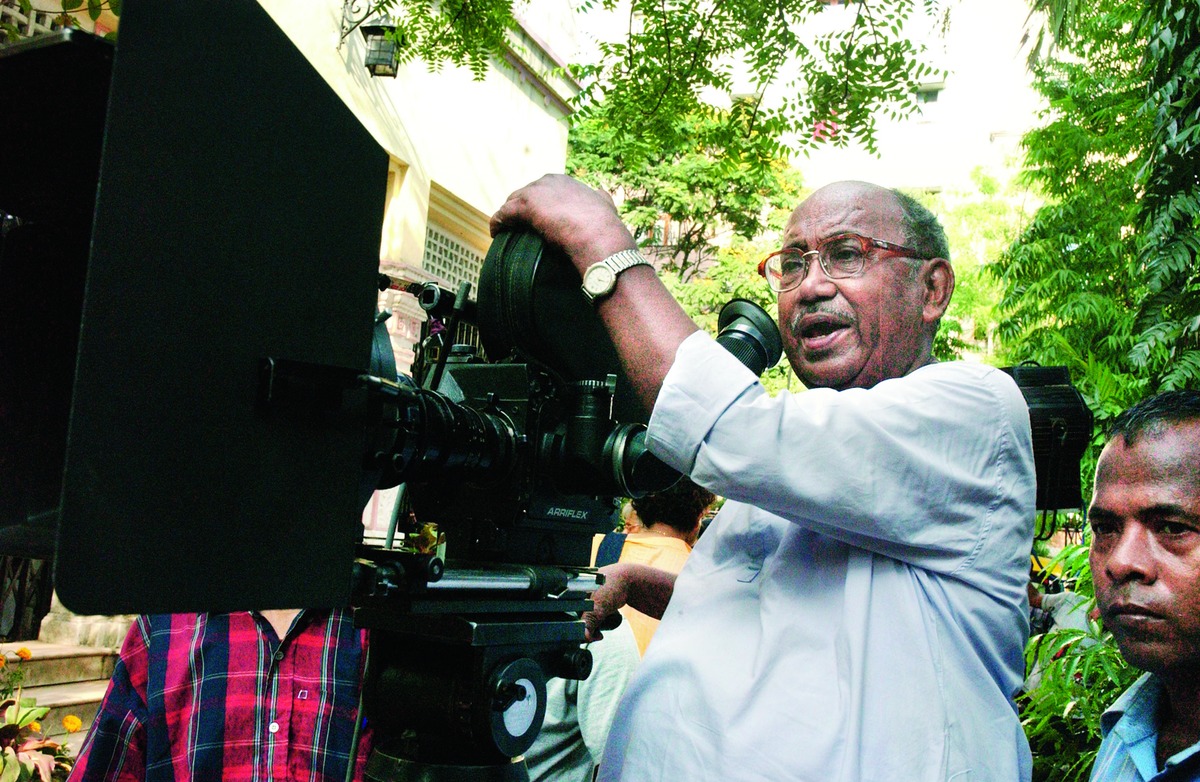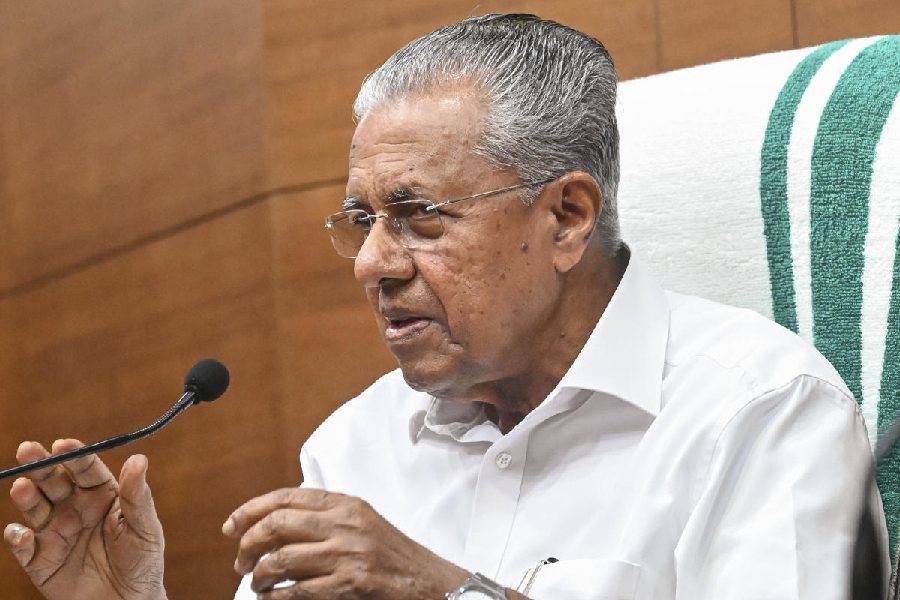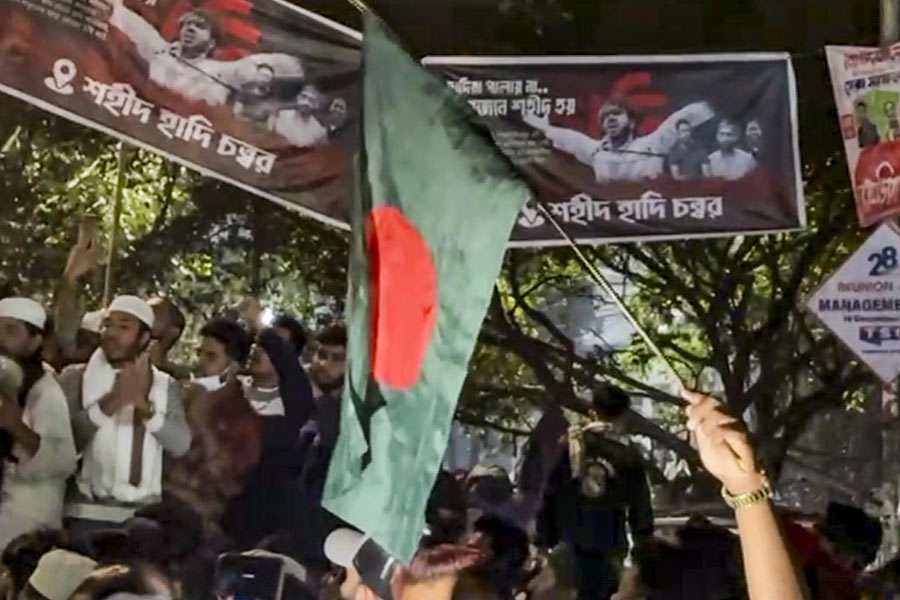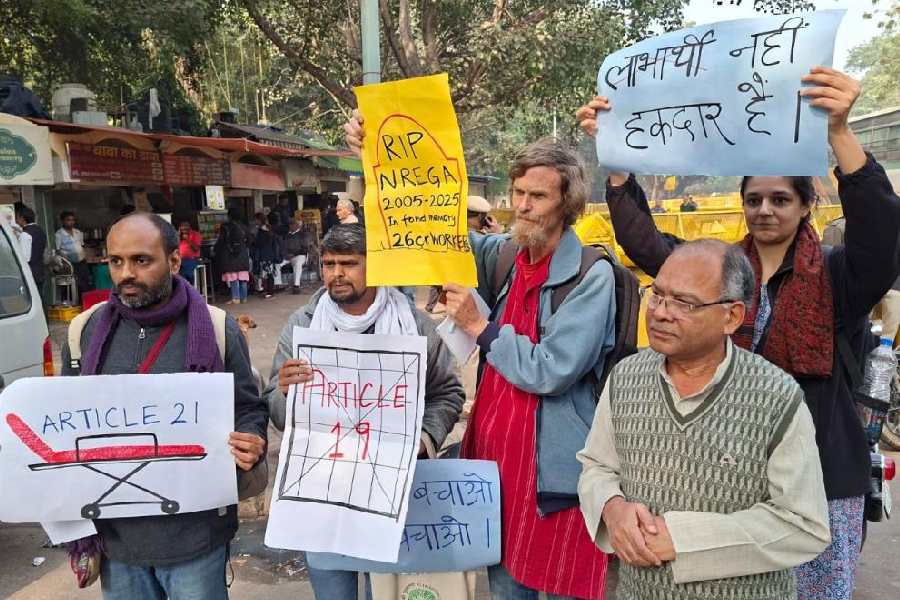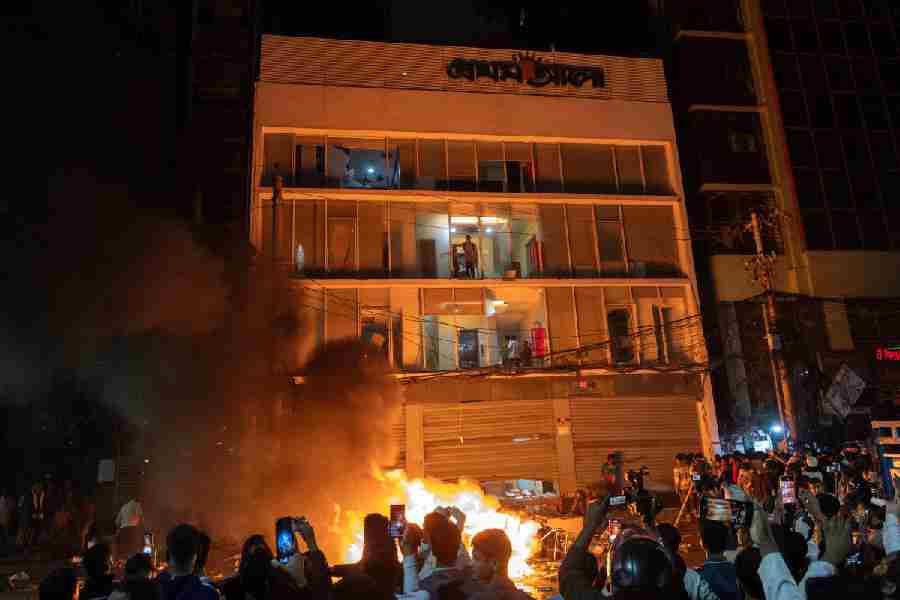
We meet film director Tarun Majumdar in the library of another publication at Taltala in central Calcutta. He is sitting at a table near the entrance, a pile of books before him. Sheets of hand-written paper lie scattered on the table. Majumdar, who is considered a unique figure in that he straddled commercial and art house cinema alike, is busy jotting down notes, spectacles perched on nose.
There are other readers in the library, so he ushers us out and leads us into an adjoining room. We sit down in one of the cubicles in the far corner. We are there to meet him before the release of his docu-feature, Adhikar. He makes sure that we get the name of the genre right. It is not a documentary but a docu-feature - a feature-like documentary.
The first documentary he directed was Aranya Amar (1985). It was produced by the state government's forest department and addressed the issue of afforestation.
Adhikar, he explains, documents the struggles of the people who work in the unorganised sector. "The idea came to me when Contractual Workers and Workmen Union, a trade union, told me about how contractual employees of a bank had been laid off, compelling them to turn into daily wagers, construction labourers or fish vendors. Some even sold lottery tickets on railway platforms. Whenever and wherever they have tried to raise their voice in protest, they have been thrashed by hired goons of the bank," he says.
But Adhikar is not just about these bank employees. It covers a lot more. The film takes into account the entire unorganised sector. "After all, 94 per cent of the total labour force of India is unorganised. And to date, nothing has been done for them," he says.
We digress from the documentary at this point and ask him if he thinks the Left government failed these people. He shakes his head vehemently. No, he doesn't think so. The CPI(M) leader, Subhas Chakraborty, had worked for the betterment of the hawkers, rickshaw-pullers and thelawalahs. "It is a different matter that they could not reach out to everyone. It is not possible," he says, straight-faced. "At least they did not promote syndicate raj or tolabaji," he says.
Regaining his composure, he says what we know already, "I am a Leftist at heart. In my college days, I tried to do everything that was required to be a Leftist - I read Karl Marx, knew Das Kapital, read Vladimir Lenin's One Step Forward, Two Steps Back. I believe, any right thinking person is a Leftist. Any person who protests against the wrongs done to people in the lower strata of society is a Marxist."
Was it this desire to correct wrongs that made him turn to this particular docu-feature? He replies, " Khider kono rong hoy na... Hunger does not have any colour."
For a full fortnight, the 87-year-old director has travelled through the length and breadth of Bengal. He has seen for himself the conditions in which the labourers work in the tea gardens, he has visited collieries, stone quarries, marshy lands of the Sunderbans and also some factories in the urban areas. He has spoken to at least 50 people before shooting the docu-feature.
He has been to sand mines on tractors in the interiors of Burdwan district, sometimes walking for half-a-kilometre to reach the mines. "I have gone everywhere - from Gocharan in south Bengal to Darjeeling and Dooars in north Bengal. I have gone to the collieries and watched people work in underground mines. I have gone to Murshidabad. I have seen the women in Basanti in the Sunderbans stand in chest-deep water infested with crocodiles collecting meen (prawn seeds)," he goes on.
In his film, we will see some of these people narrating their stories. Time and again professional artistes step in though. "Beyond a point, these people do not know how to communicate their plight to the larger audience," he explains.
But will people get a chance to see his documentary? After all, India does not have a developed market for these films. He agrees. "India has never tapped this market. In Australia, Canada, people regularly watch this genre. Here they will not release a docu-feature in a cineplex," his tone is complaining.
He goes into flashback mode, talks about the Left government and how it used to encourage documentary filmmakers. There were regular screenings as well. "The primary aim was to encourage and facilitate screening of documentaries and the government used to buy three of the best films," he adds.
It is not difficult to guess that a comparison is forthcoming, and we are right. He, eventually, remarks how the present state government is backing monopolists in Tollywood and helping them "manufacture" films that he does not even consider commercial cinema. "I do not blame the audiences for seeing these films. They are left with no choice. Earlier, movies were based on literature. They addressed human issues, studied nature and society," he says. And then adds pensively, "If another Satyajit Ray wants to make Pather Panchali or another Ritwik Ghatak wants to make Nagarik, they will not be able to do so. The golden days of Bengali cinema are gone."
But his docu-feature will be released online and reach the masses. DVDs will be distributed. He has plans to release it with subtitles in several regional languages and have it dubbed in some others. It documents a national cause, after all.
As twilight streams in from the window behind us, we talk about the collapse of the Left. What is the way forward, according to him? He replies, "We have to start from scratch. We have to build role models in every sector. We have to gain back the faith of the people."
He looks animated for a while and then he says softly, "Mind you, I don't have any political colour."

